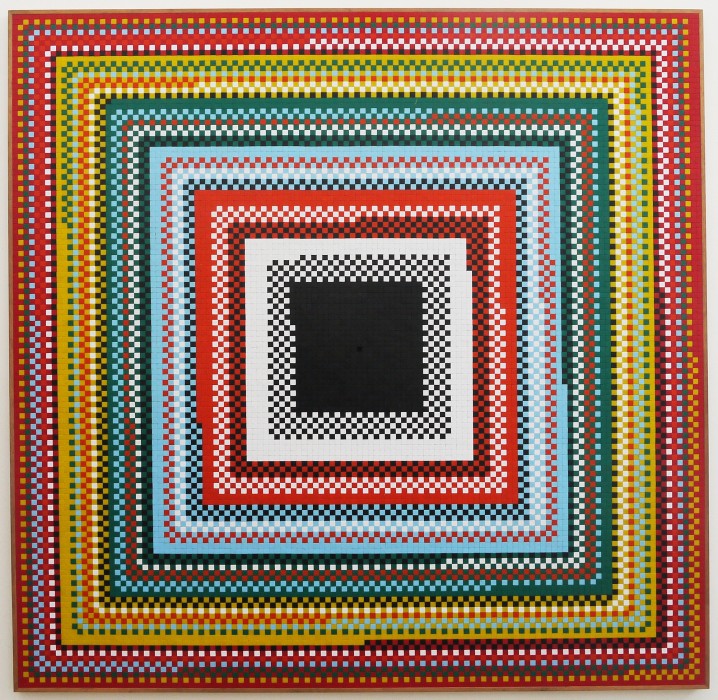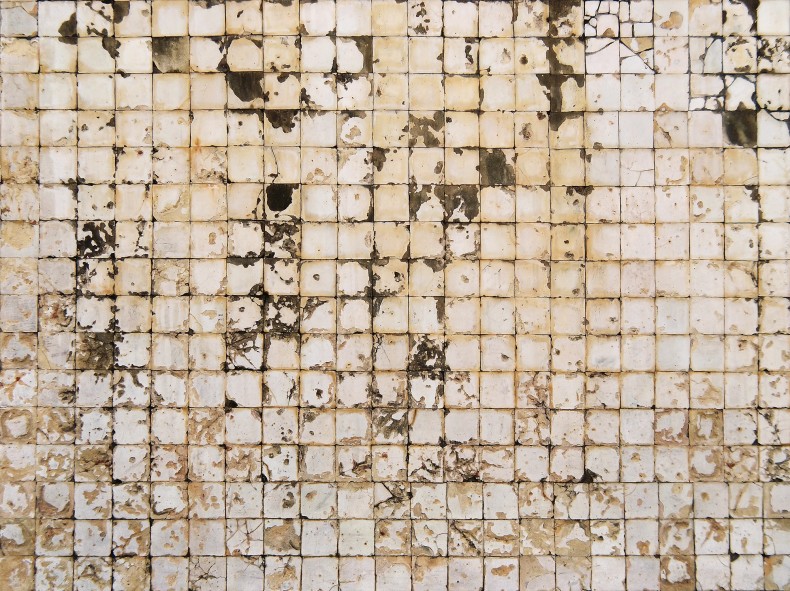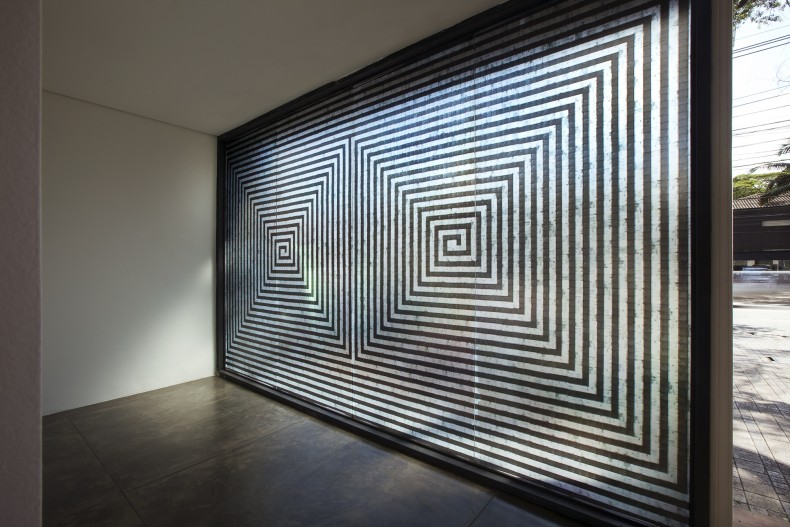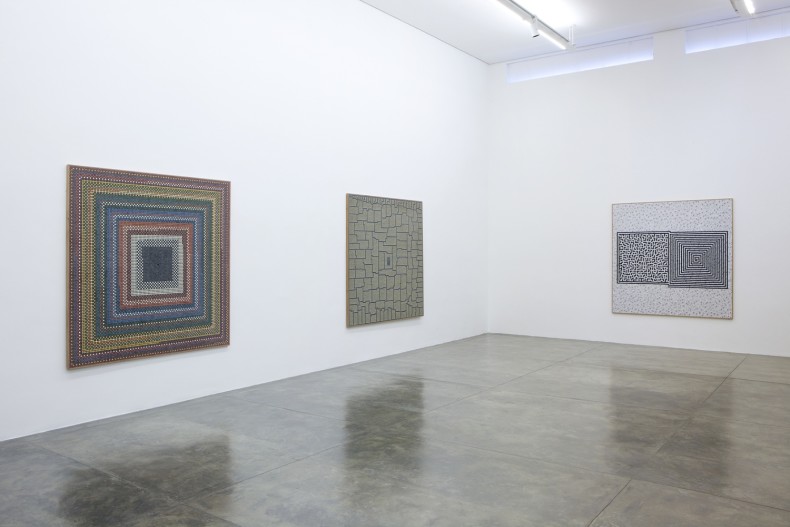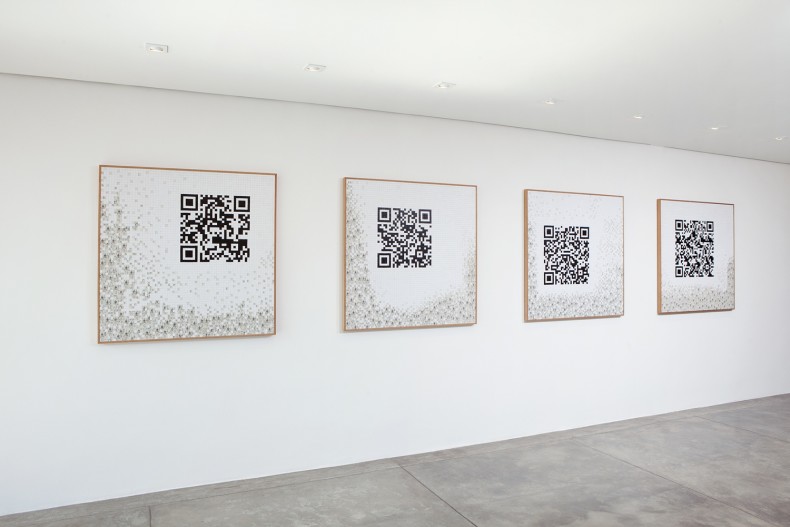Starting on May 5th, Galeria Nara Roesler will feature the exhibition The spiral and the Labyrinth, by José Patrício. This will be the Pernambuco-based artist’s third individual show at the gallery, curated by Cristiana Tejo, the co-curator of the last Panorama of Brazilian Art at the MAM-São Paulo, and author of the critical essay for this exhibition.
The artwork is a continuation of the artist’s ongoing research into the universe of numbers and combinations. The works are reminiscent of the Vanitas (vanities), artistic expressions originated in the 16th and 17th centuries in Europe, especially in the Netherlands, and which emphasize the brevity of human life, with near-ubiquitous skulls and skeletons. José Patricio carries this discussion into modern days by using those classic symbols, and sentences that reflect on human finiteness.
In Vanitas Venezia, the artist digitally processed a photograph of a skull on a wall in Venice, creating a modular composition in shades of grey, white and black. The curator Cristiana Tejo describes this piece as an “overflowing of his research into the technical possibilities of exploring the logic of combinations,” because the artist has used combination games, in particular domino, as a cornerstone of several of his works, ever since he designed an installation for the convent of São Francisco, em João Pessoa (state of Paraíba), in1999.
Vanitas Venezia, Azulejo and Azulejo II are accompanied by modular photographs taken at the Convent of São Francisco, in Paraíba. The wear of time creates random drawing patterns, and the artist can do nothing but witness and record these findings. The piece Vanitas qr code makes use of qr code mobile phone technology, adopted by various commercial platforms, to encourage interactivity. The show’s visitors will be able to use their mobiles to decode what is expressed by the compositions made from puzzle pieces, in a structure comprised of letters rather than numbers.
The third section of the show features works that evoke control and rhythm. In Vanitas espiral e labirinto, José Patricio deconstructs the logic of puzzles. The artist adopts the shaded tones of manufacturer-supplied puzzle pieces and reorganizes them into a new whole. Turned on its blank side, the skull puzzle pieces become abstract, order-prone modules. “It seems as though we are condemned to wish life to be a spiral, steady and progressive, but it is nothing but a large labyrinth,” explains Cristiana Tejo.
José Patricio started his career in the 1980s, in Recife (state of Pernambuco), his city of birth. In 1989 he won the Acquisition prize at the 11th National Salon of Fine Arts, in Rio de Janeiro, and in 1992 he had his first collective show abroad, in Marseille, France, followed by several important exhibitions, such as the 22nd International Biennial of São Paulo (1994), the Mercosur Biennial of Visual Arts (2003), the Havana Biennial (2004), the Panorama of Brazilian Art, at MAM-SP (2005), Malakoff Cultural Observatory, in Recife (2005) and the Octagon Project (2008), at the São Paulo State Art Gallery (Pinacoteca).
The artist’s work is represented in important collections across Brazil, such as the National Museum of Fine Arts, in Rio, the São Paulo State Art Gallery, the Aloísio Magalhães Modern Art Museum, in Recife, the Gilberto Chateaubriand collection (MAM-Rio de Janeiro), and in renowned foreign institutions, such as the Cartier Foundation in Paris. Patrício featured in the collective show Os cinéticos, in 2007, at the Museo Nacional Centro de Arte Reina Sofía in Madrid, and in the exhibition Postcards from Cuba: A Selection from the 8th Havana Biennial, held at the Kunstsenter in Oslo. In 2011, a book entitled “José Patrício: Cogitações sobre o número” was published, organized by art critic and curator Paulo Herkenhoff, presenting an overview of his career and including artist comments in some excerpts.
